
Hyōgo Kusari Tachi Koshirae: About 900 years before
| Table of contents |
Changes of a Koshirae |
Scabbard, Spring clip &
tassel | Mounting metal parts |
| Search in a page
Tsuka |
Hilt binding |
Tsuba & Seppa | Name of a blade | Tachi & Katana |


 |
 |


 Type 94,98: Morohinerimaki is a standard |
 Type Tachi: There is much Hiramaki |
 Type 98: Ikkanmaki is rare |
 Type 3: Ikkanmaki is a standard |
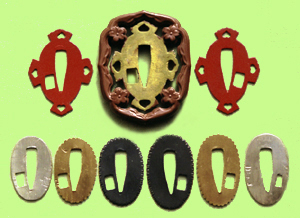 |
Right and left of the upper
row ← Mallow-shaped big washers Rising sun big washers → Lower berth:
Three-sort smallness washers. Right and left from a center: Kikuza, Tateshino, Ko-kizami |
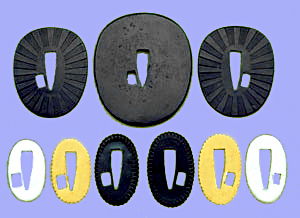 |
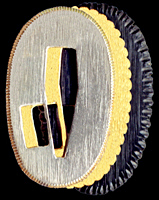 |
Three sorts of small washers (Seppa) From a top: Ko-kizami, Tateshino and Kikuza |
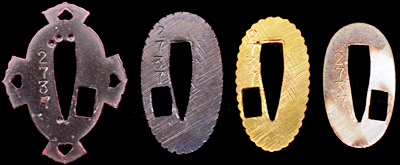
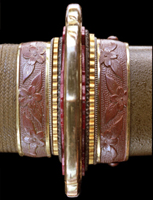 |
Tatekizami of a small washers has big influence on the grace of a Koshirae |
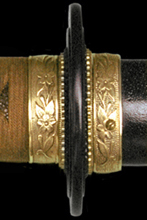 |





| ← Changes of a Koshirae Table of
contents |
The scabbard of a Guntō → |